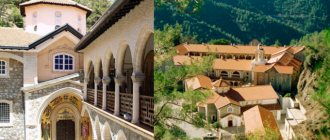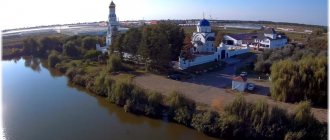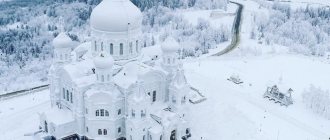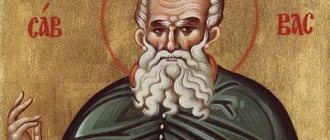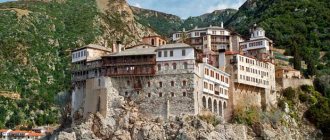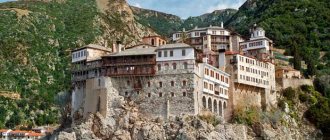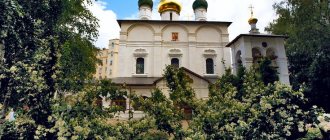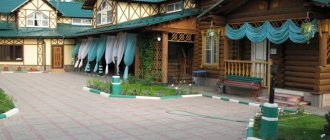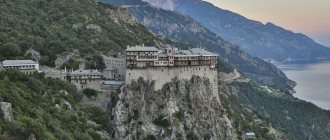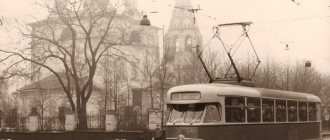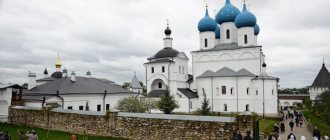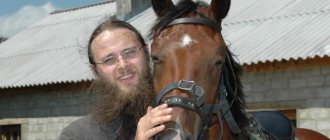Mir
Greece periphery Thessaly Panteleimon Monastery (Athos) Map is loading...
{"format":"leaflet","minzoom":false,"maxzoom":false,"limit":50,"offset":0,"link":"all","sort":[""], "order":[],"headers":"show","mainlabel":"","intro":"","outro":"","searchlabel":"\u2026 \u0441\u043b\u0435\ u0434\u0443\u044e\u0449\u0438\u0435 \u0440\u0435\u0437\u0443\u043b\u044c\u0442\u0430\u0442\u044b","default":"","import-annotation":false,"width ":"auto","height":"350px","centre":{"text":"","title":"""link":"""lat":40.2391612197099988179616048000752925872802734375,"lon": 24.2008834994449983923914260230958461761474609375,"icon":""},"title":"","label":"","icon":"","lines":[],"polygons":[],"circles":[ ],"rectangles":[],"copycoords":false,"static":false,"zoom":8,"defzoom":14,"layers":["OpenStreetMap"],"image layers":[] ,"overlays":[],"resizable":false,"fullscreen":true,"scrollwheelzoom":true,"cluster":false,"clustermaxzoom":9,"clusterzoomonclick":true,"clustermaxradius":80, "clusterspiderfy":true,"geojson":"","clicktarget":"","showtitle":true,"hidenamespace":false,"template":"","userparam":"","activeicon": "","pagelabel":false,"ajaxcoordproperty":"","ajaxquery":"","locations":[{"text":"\u003Cb\u003E\u003Ca href=\"/palomnik/%D0% 9F%D0%B0%D0%BD%D1%82%D0%B5%D0%BB%D0%B5%D0%B8%D0%BC%D0%BE%D0%BD%D0%BE%D0%B2_% D0%BC%D0%BE%D0%BD%D0%B0%D1%81%D1%82%D1%8B%D1%80%D1%8C_(%D0%90%D1%84%D0%BE%D0 %BD)\" title=\"\u041f\u0430\u043d\u0442\u0435\u043b\u0435\u0438\u043c\u043e\u043d\u043e\u0432 \u043c\u043e\u043d\u0430\u0441\u0442 \u044b\ u0440\u044c (\u0410\u0444\u043e\u043d)\»\u003E\u041f\u0430\u043d\u0442\u0435\u043b\u0435\u0438\u043c\u043e\u043d\u043e\u0432 \u043c\u043e\u043d\ u0430\u0441\u0442\u044b\u0440\u044c (\u0410\u0444\u043e\u043d)\u003C/a\u003E\u003C/b\u003E\u003Chr /\u003E\u003Ca href=\»/palomnik/%D0% A1%D0%B2%D0%BE%D0%B9%D1%81%D1%82%D0%B2%D0%BE:%D0%90%D0%BD%D0%BD%D0%BE%D1%82 %D0%B0%D1%86%D0%B8%D1%8F\" title=\"\u0421\u0432\u043e\u0439\u0441\u0442\u0432\u043e:\u0410\u043d\u043d\u043e\u0442\ u0430\u0446\u0438\u044f\»\u003E\u0410\u043d\u043d\u043e\u0442\u0430\u0446\u0438\u044f\u003C/a\u003E: \u043e\u0434\u0438\u043 d\u0438\u0437 20\ u00ab\u043f\u0440\u0430\u0432\u044f\u0449\u0438\u0445\u00bb \u043c\u043e\u043d\u0430\u0441\u0442\u044b\u0440\u0435\u0439 \u043 d\u0430\u0421\u0432\u044f\ u0442\u043e\u0439 \u0413\u043e\u0440\u0435 \u0410\u0444\u043e\u043d; 19-\u0435 \u043c\u0435\u0441\u0442\u043e \u0432 \u0438\u0435\u0440\u0430\u 0440\u0445\u0438\u0438\u0441 \u0432\u044f\u0442\u043e\u0433\u043e\u0440\u0441\u043a\u0438\u0445 \u043e\u0431\u0438\u0442\u0435\u043b\u0435\u0439, \u0442 \u0440\u0430\u0434\u0438\ u0446\u0438\u043e\u043d\u043d\u043e \u0441\u0447\u0438\u0442\u0430\u0435\u0442\u0441\u044f \u0440\u0443\u0441\u0441\u043a\u0 438\u043c","title":" \u041f\u0430\u043d\u0442\u0435\u043b\u0435\u0438\u043c\u043e\u043d\u043e\u0432\u043c\u043e\u043d\u0430\u0441\u0442\u044b\u 0440\u044c (\u0410\u0444\ u043e\u043d)","link":"","lat":40.2391612197099988179616048000752925872802734375,"lon":24.20088349944499839239142602309584617614746093 75,"icon":""}],,"imageLayers":[]}
40.27819; 24.217071
Greece, periphery of Thessaly, autonomous monastic state of the Holy Mountain
periphery Thessaly
Greece
Telephone:
+30 2377 23252, +30 2377 23682 (the office answers calls from 10:00 to 12:00)
Monastery of St. Panteleimon
also known as
Rossikon
or
New Russik
- one of the 20 “ruling” monasteries on Holy Mount Athos; occupies 19th place in the hierarchy of Svyatogorsk monasteries, is traditionally considered Russian, although in terms of the composition of the inhabitants it became completely Russian only in the last quarter of the 19th century, when it came under the actual control of the Russian Church and the Russian government (until the beginning of the First World War). Greek names: Μονή Αγίου Παντελεήμονος and Ρωσσικόν.
Like all other Athonite monasteries, being a patriarchal stauropegy, it is under the direct canonical jurisdiction of the Patriarchate of Constantinople; monks, according to the Statutory Charter of the Holy Mountain in force since 1924, are required to accept citizenship of the Hellenic Republic (given automatically upon admission to the monastery).
History[edit]
The original Russian monastic settlement on Mount Athos already existed in the 11th century and was recognized as a separate monastery in 1169 ( monastery of the Thessalonian
).
During the Mongol-Tatar yoke in Rus', most of the monks were Greeks and Serbs. At the end of the 15th-16th century, the monastery was inhabited mainly by Serbs, which is evidenced by documents of correspondence between the monastery administration and the Moscow authorities of that time.
In the 18th century, the monastery fell into such a disastrous state that in 1726, according to the testimony of Vasily Grigorovich-Barsky (“the first visit to Mount Athos”), only two Russian and two Bulgarian monks remained in it under the Bulgarian abbot. In 1735 the monastery was declared Greek.
Around 1770, the Greek monks of the Panteleimon Monastery moved to the coastal cell that belonged to the monastery in honor of the Resurrection of Christ, where at the beginning of the 19th century the monastery was rebuilt by the ruler of Wallachia, Scarlatus Callimachi; and Old Rossik remained to act as a monastery.
After the restoration of normal life on Mount Athos (with the end of the Turkish military occupation) in 1830, after the Peace of Adrianople, the monastery did not receive its former estates back, since they were transferred to other monasteries for debts; Protat even wanted to exclude the monastery from the list of monasteries, but this decision was rejected by Patriarch Constantinople I.
Since 1821, the abbot was the Greek Gerasim, who favored the Russian presence. The Russian presence in the monastery began to revive with the arrival of Hieromonk Anikita (in the world of Prince Shirinsky-Shakhzmatov) and Hieromonk Jerome (merchant son Ivan Solomentsov; †1885) in the 1830s.
After the death on March 24, 1846 of the common confessor of the Russians on Athos, Elder Hieroschemamonk Arseny, Father Jerome became his successor in spiritual influence on the Holy Mountain among the Russians, and not only among them, but even among the Greeks, Bulgarians, Serbs, and Holy Mountain residents of other nationalities. Father Jerome did not seek this influence; it was the natural fruit of his ascetic life, spiritual experience and heartfelt participation in everyone in need.
The monastery enjoyed the patronage of the Russian imperial family and in the second half of the 19th century it expanded and rebuilt significantly.
In 1861, the spiritual council of the monastery elders decided to send Hieromonk Arseny Minin to Russia to collect voluntary donations. In August 1867, he brought shrines from the Panteleimon Monastery to the Moscow Epiphany Monastery, for which later, with the money of benefactors, he built the Athos Chapel (closed and demolished by the Bolsheviks in 1929).
Archimandrite Macarius (Sushkin) became the first Russian abbot in 1875. The significant increase in the number of inhabitants from Russia caused friction and conflict; Russian inhabitants wanted official recognition of Russian jurisdiction over the monastery, as well as other Russian settlements on Athos. At the beginning of the 20th century, the Russian Holy Synod and the government considered both the monastery itself and all Russian inhabitants on Athos as also being under their jurisdiction (along with Ottoman citizenship). This practice was expressly prohibited by the Charter of the Holy Mountain, adopted in 1924. Although after the Second World War the Russian Orthodox Church and the USSR authorities listed the Panteleimon Monastery among the monasteries of the Russian Orthodox Church, there were no ecclesiastical or civil grounds for this. In the late 1980s, the Patriarchate of Constantinople directly pointed out to the monastery residents that it was inadmissible to raise the name of the Moscow Patriarch at public worship.
By the end of the 19th century it became the largest monastery on the Holy Mountain in terms of area and number of brethren. By 1903 there were 1,446 monks there, and by 1913 there were more than 2,000. Rossicon suffered from fires many times, most famously in 1307, when the monastery was burned by Catalan pirates, and in 1968.
The monastery is marked by the exploits of a number of Russian monks, the most famous of whom is Elder Silouan, who died here in 1938.
Due to the policy of the Patriarchate of Constantinople aimed at squeezing out Russian monks from Athos and the actions of the Greek authorities to limit the arrival of USSR citizens to Athos, 13 monks remained in the Panteleimon Monastery in the early 1970s; in a letter to Patriarch Pimen of Moscow dated September 9, 1972, Schema-Archimandrite Gabriel (Legach) wrote: “...Our Monastery is in an extremely difficult situation, especially due to the lack of brotherhood. Over time, the number gradually decreases - the old people die out, but there are no replenishments, this situation leads those already living here into despondency and hopelessness. We, knowing the love of the Russian People for Holy Athos, believe and hope that Your Holiness and the entire Russian Church will take all possible measures to ensure that this Russian (almost the last on Athos) corner with its shrines remains and continues to exist for the comfort of everyone a believing Russian person..."
After the visit of Patriarch Pimen to the Holy Mountain in 1972 (the first ever visit to Athos by the All-Russian Patriarch), the situation, with the active assistance of the USSR government, began to improve a little with the replenishment of the brethren.
History of Panteleimon Monastery
The first Russian monks, who later settled Stary Rusik, lived 7 km from it, in the monastery of the Blessed Virgin Mary Xylurgu. In 1169, many brothers of Greek and Russian nationalities inhabited the monastery. The main church body Protat decided to transfer the monastery to them. Since then it has been called “Nagorny”. Here the great Saint Sava was tonsured a monk.
The 18th century was marked by a difficult time for Russian monks due to the war between Russia and Turkey, and the internal political views of Peter I. Already in this century, the number of brethren began to decline.
In 1765, construction began on new monastery walls on the seashore, where monks from the founded monastery of the Nagorny Monastery later moved, and the old one began to be called the Old Rusik monastery. In 1803, Greeks and Russian monks were inhabitants of the monastery, a common place of residence.
50 years before the end of the 18th century, the number of Russian monks increased to 1000 people, and in 1875 a new abbot of Russian nationality was elected. Thanks to the abbot of the monastery, services began to take place in another language - Russian.
The architectural appearance of Panteleimon's main monastery is very different from the characteristic styles of Greek monasteries. Its reconstruction took place in the 19th century, when protective structures were not needed to protect against piracy. The temple painting is in the Russian traditional style of icon painting and everything reminds us of Russia.
On the bell tower there is a bell weighing 13 tons. Its ringing can be heard on the other side of Mount Athos.
In 1917, the Russian flock could not visit the Svyatogorsk ascetics. In 1959, the monastery was empty; no more than 50 people remained in it. The fires devastated the library, 6 churches, hotels for pilgrims and cells burned down. To this day, the number of monks has slowly increased and from 13 has reached 70. These are mainly monks of Slavic origin.
The ancient icon of the healer Panteleimon and more than 25 thousand printed books are kept and revered here.
Current state[edit]
Currently, about 70 monks from Russia, Ukraine and Belarus are working in the monastery of St. Panteleimon.
Bell of the Church of St. Panteleimon is considered the largest in the Balkans. It is located on the first floor of the bell tower above the Refectory. The bell weighs 13 tons, has a diameter of 2.70 m and a circumference of 8.71 m.
The monastery has 15 chapels and 5 cells, of which 2 are located in Kareya. It also has the farmsteads of Chromitsa, the monastery of Xilurgu, the New Thebaid and the so-called Paleomonastiro.
Temples[edit]
- Temple of the Holy Great Martyr and Healer Panteleimon
- Church of the Intercession of the Blessed Virgin Mary
- Church of St. Mitrophan of Voronezh, wonderworker
The main cathedral church of the monastery of the Holy Great Martyr and Healer Panteleimon was built at the beginning of the 19th century and is famous for its wonderful paintings, made in the best traditions of the Russian school of icon painting. The second cathedral church of the monastery is the Church of the Intercession of the Blessed Virgin Mary. Here are the miraculous icon of the Mother of God “Jerusalem”, as well as the icon of John the Baptist and the ancient icon of the holy great martyr Panteleimon. The third temple is named in honor of St. Mitrofan, the Voronezh wonderworker.
Paraklis[edit]
- Ascension of the Lord
- Nativity of the Blessed Virgin Mary
- Introduction to the Temple of the Mother of God
- St. Archangels
- Beheading of St. John the Baptist
- Holy Father of God Joachim and Anna and St. Joseph the betrothed
- Holy Hieromartyr Charalampios
- St. Nicholas the Wonderworker
- St. Great Martyr Demetrius of Thessalonica
- St. Constantine and Helena
- St. Sava the Sanctified
- Holy Grand Dukes - Equal to the Apostles Vladimir and Alexander Nevsky
- Venerable Sergei of Radonezh the Wonderworker
- Lecturer Gerasim of Jordan and Hieronymus of Stridon
- In honor of all Saints of Athos (at the brotherly hospital)
- All Holy Russian Princes and Tsars
Outside the monastery, in different places of the monastery land, hermitages, metochas and hermit cells, there are 36 churches.
Compound[edit]
- Compounds in Moscow
- Compound in St. Petersburg
The monastery also has a courtyard in Istanbul. The Russian metochion and the current Church of the Holy Great Martyr Panteleimon is located in the Karakoy district, at Hoca Tahsin Sokak, No. 19, Karakoy, Istanbul.
Sketes[edit]
Also, the monastery of St. Panteleimon at different times belonged to:
- Old (Nagorny) Russik
. Nowadays one monk Jonah lives in it. - St. Andrew's Skete
. After the death of the last Russian monk, he moved to the Vatopedi monastery. - Skete New Thebaid
. - Skete Krumica (Nurse)
. It is located almost on the border of Athos, not far from the town of Ouranoupolis. Around the monastery there are numerous vineyards of the monastery. The monastery was a monastic health resort; during its heyday there were several hundred monks. At the moment, the monastery is being restored by several inhabitants sent from the monastery of St. Panteleimon. During the great fire on Mount Athos in August 2013, the monastery miraculously survived. It is noteworthy that the fire approached the monastery on the night of St. Panteleimon, and although all the vegetation around for many kilometers was burned to the ground, the monastery and vineyards remained untouched by the flames. - Elias monastery
. Founded by the Monk Paisius Velichkovsky, now assigned to the Pantokrator monastery. - Skete of the Mother of God Xylurgu (Treemaker)
. The oldest Russian monastery in the world, in 2016 the monastery celebrates the 1000th anniversary of Russian Orthodoxy on Mount Athos.
The first Russian leader to visit Rossikon was Vladimir Putin (September 9, 2005).
Take a virtual tour of the monastery
Orthodox Life
On the day of remembrance of the Holy Great Martyr Panteleimon, we present to our readers a story about the monastery of the Great Martyr. Panteleimon on Mount Athos and the people who inhabited it at different times.
The architectural appearance of the Russian St. Panteleimon Monastery is very different from the Greek monasteries traditional for Athos; The fact that it was rebuilt in the 19th century, when it was no longer necessary to erect fortifications to protect against pirate raids, also played a role in this.
Many Russian pilgrims use the St. Panteleimon Monastery as a base from which they travel to various places on the Holy Mountain. However, you should be prepared for the fact that, in accordance with Russian tradition, you will be asked to work for the benefit of the monastery.
In the East we have a very important point of support, created by our history itself or by the people, in addition to any direct participation of our authorities: Athos.
One of its meanings is purely ecclesiastical, Orthodox, considered without any relation to the nationality of the monks inhabiting it; if there were no Russians on Athos at all, if their number and influence did not increase every year, then Athos, as a Holy Place of Orthodoxy, would be important for us, as one of the main points of support for Orthodox policy in the East.
Konstantin Leontiev, Russian philosopher of the 19th century.
The first Russian monks appeared on Mount Athos during the time of Equal-to-the-Apostles Grand Duke Vladimir. It was on the Holy Mountain that the founder of Russian monasticism, the Monk Anthony of Pechersk, took monastic vows.
Monks from Russia labored in many Athonite monasteries, and there were hermits among them. Gradually, many Russian monks settled in the monastery of the Mother of God Xylurgu, located at a considerable (about 8 km) distance from modern Rusik. In 1169, Protat transferred to the brethren Xylurgu, due to its large number (the monastery, like many monasteries of that time, was of a mixed nature: Russians, Greeks and representatives of other nations lived in it), another monastery, which became known as Nagorny, or later - Old Rusik. Another name of it is the Thessalonian monastery (apparently, it is associated with the first founder of the monastery, a certain Thessalonian). Here the great Serbian Saint Sava took monastic vows.
The tall pyrgi (towers) of Old Russik on the southern and eastern sides defend themselves only with stone walls from the centuries-old upheavals of time, appearing in gigantic form above the dead silence of the desert and above the undisturbed sleep of its humble inhabitants who have long since fallen asleep in Bose. The wooden work in the piers has decayed. The area of the old Russian monastery is extremely quiet and fascinating with its serenity and austerity of hermitage.
The mountain forest hides the monastery on all sides, and only from the northwestern side does an amazing view of the sky-high heights of distant Olympus and the playing waves of Monte Santo open up. The noisy spring, coming out of the neighboring mountain and making its way through the stones and a picturesque clearing, easily and quickly covers the monastery from the north and not far from it, carried away into the wilds, lost in its low-lying bushes. On the southeastern tower of the monastery, the small temple of the Forerunner of the Lord has not yet crumbled to this day. A century-old wooden cross overshadows this orphaned shrine.
Hieromonk Sergius (Vesnin)
The Serbian Župan Stefan Uroš, the Byzantine emperors Andronikos II, John VII and Manuel II Palaiologos and the Wallachian rulers, the Greeks Gregory and Scarlatus Callimachi, greatly benefited the monastery. The eighteenth century was especially difficult for Russian monasticism, both because of the wars that Russia waged with Turkey, and because of the internal policies of Peter I and his immediate heirs. By the end of this century, the brethren were greatly reduced in number and moved to a new monastery on the seashore (its construction began in 1765). Greeks and Russian monks jointly began the construction of new monastery buildings. In 1803 the monastery became a dormitory, and in 1812 construction of the cathedral church began. The benefactor of the monastery, Scarlat Kalimakh, suffered martyrdom from the Turks along with Patriarch Gregory V. The revival of the monastery was suspended for several years. A new page in the life of the monastery opened with the growing number of Russian monks. This process began in 1840 and by 1895 the number of brethren of the Panteleimon Monastery reached a thousand people. In 1875, an abbot of Russian nationality was elected, and services began to be performed not only in Greek, but also in Russian. The names of the famous elders Arseny (Minin), Aristoklius and Kirik are associated with the name of the monastery.
The latter, having gone to the Panteleimon Monastery as a young man, was sent a few years later to the Athos courtyard in Moscow, where he participated in the publication of books by St. Theophan the Recluse. Later, the elder was appointed rector of the Athos metochion in Odessa. Here he found a wide circle of spiritual children “from the mayor to the merchant women.” Returning to the Holy Mountain, he entered into the fight against the heresy of name-glorification. After the October Revolution, Father Kirik remained in the St. Panteleimon Monastery, where he was the confessor of the brethren.
The elder was an experienced practitioner of heartfelt prayer and taught his spiritual children not with words, but first of all with the example of his ascetic life. Father Kirik often reminded that when standing for prayer, one must remember that God looks at the one praying; not on the garments of the garment, but on the secret heart of a person (see: 1 Pet. 3, 4).
The architectural appearance of the Russian St. Panteleimon Monastery is very different from the Greek monasteries traditional for Athos; The fact that it was rebuilt in the 19th century, when it was no longer necessary to erect fortifications to protect against pirate raids, also played a role in this. The internal structure of the monastery churches is also very reminiscent of Russia; only, perhaps, the refectory (built in 1890, and painted in 1897) and the Church of the Great Martyr. Panteleimon are decorated in the usual style for the Holy Mountain. In total, the monastery has 25 paraclises, including: the Intercession of the Blessed Virgin Mary, Alexander Nevsky (accommodates 2000 people), the Great Martyr. Demetrius, St. Sergius, Dormition of the Blessed Virgin Mary, St. Mitrofan of Voronezh, app. Peter and Paul, Metropolitans of Moscow Peter, Alexy, Ionna, Philip, Archangels, Seraphim of Sarov and Theodosius of Chernigov, St. Evvula, mother of the Great Martyr. Panteleimon and the Transfiguration of the Lord. The main cathedral church of the monastery was built at the beginning of the 19th century. and painted in the traditions of the Russian icon painting school.
On the high and powerful bell tower of the monastery there is a bell weighing 818 pounds and 10 pounds, i.e. more than 13 tons. It was cast in Moscow at the factory of the honorary hereditary citizen Andrei Dmitrievich Samgin by master Joachim Vorobyovsky and brought to Athos in May 1894. When this bell is rung, the ringing can be heard on the opposite shore of the Sighiti Bay.
The twentieth century became a period of difficult trials for the monastery of St. Panteleimon. The October Revolution of 1917 made contacts between the Holy Mountain and the Russian Church impossible.
By 1959, the Russian monastery had fallen into complete decline, only 50 people remained in it, the youngest of whom was 54 years old, and most of the monks were ancient elders.
In 1959, a fire occurred in the Panteleimon Monastery, as a result of which the library was severely damaged. The number of brethren continued to decrease. Enormous damage to the monastery was caused by a devastating fire on October 23, 1968, when the entire eastern part of the monastery with six churches burned down, hotels and cells burned down.
In 1972, Patriarch Pimen of Moscow and All Rus' visited the Holy Mountain - this was the first visit to Athos by the Moscow Patriarch. In August 1974, two of the six candidates proposed by the Russian Church were given permission to settle on the Holy Mountain, but only one of them - the current abbot of the Panteleimon Monastery, Archimandrite Jeremiah - arrived on Athos the next year. In the summer of 1976, first four monks from the Pskov-Pechersk Monastery arrived at the Holy Mountain, then nine more monks. By that time, there were 13 inhabitants left in the Panteleimon Monastery.
From that time on, pilgrimage trips of delegations of the Russian Church began to take place annually on Easter, and then on the feast of the Great Martyr Panteleimon. In May 1978, to the monastery of St. Five monks arrived at Panteleimon.
On April 16, 1985, the Kinonot of the Holy Mountain, at an emergency meeting, accepted an appeal to the Greek Foreign Ministry with a request to allow six Russian, as well as Bulgarian and Romanian monks to enter Athos.
In March 1987, to the monastery of St. Seven monks arrived at Panteleimon, including the current confessor of the monastery, Hieromonk Macarius, and the representative of the monastery in Kinot, Hieromonk Kirion. This group was followed by others, and by the time of the visit of His Holiness Patriarch Alexy II of Moscow and All Rus' to the Holy Mountain (June 1992), the brethren numbered 40 people.
Currently, seventy monks from Ukraine, Russia and Belarus are working in the monastery of St. Panteleimon.
The monastery contains: the chapters of the Great Martyr. Panteleimon and etc. Silouan of Athos, particles of the relics of the Prophet, Forerunner and Baptist John, app. Alpheus, Timothy, James, Peter, Andrew, Luke, Philip, Thomas, Bartholomew and Barnabas, First Hour. archdeacon Stephen, St. Basil the Great, Gregory the Theologian and John Chrysostom, St. Cyril of Jerusalem, sschmch. Dionysius the Areopagite, St. Stefan Novy, VMC. Marina, mchch. Tryphon and Paraskeva, St. bessrr. Cosmas and Damian, St. Isaac of Dalmatia, right. Joseph the Betrothed and other saints. In the Church of the Intercession of the Virgin Mary there are miraculous copies of the “Kazan” and “Jerusalem” icons of the Mother of God. There are many other revered icons in the monastery. In particular, the ancient icon of St. Great Martyr Panteleimon, the image of John the Baptist and the mosaic icon of St. Alexander Nevsky. The paraclis of the Intercession of the Most Holy Theotokos contains valuable printed Gospels and the Holy Chalice, presented to Russik by Grand Duke Konstantin Nikolaevich in 1845.
The richest library of the monastery contains 1,320 Greek and 600 Slavic manuscript codexes and over 25,000 volumes of printed books.
The monastery is subordinate to several cells, including St. Euthymius, the Holy Unmercenaries, the Life-Giving Source, St. Stephen and St. George (the last two are located near Kareya, the first is notable for its unique frescoes and was recently restored, and the second houses the monastery’s representative office).
The monastery owns a monastery in Khromitsa (Chromitissa) at the beginning of the Athos peninsula near Ouranoupolis, a monastery in Xylourgu (the Greeks call it “Theotokos”), the New Thebaid monastery and Old Rusik (also known as “Palaeomonastiro”).
The Russian monastery is inextricably linked with the name of St. Silouan of Athos. This great modern ascetic is widely known, not only in Greece and Russia, but throughout the Orthodox world.
Saint Silouan is especially revered on the Holy Mountain; until recently on Mount Athos one could meet monks who were personally acquainted with him.
Semyon Ivanovich Antonov - the future Elder Silouan - was born in 1866 into a simple peasant family in the Tambov province. He came to Athos in 1892, in 1896 he was tonsured into the mantle, and in 1911 into the schema.
“I brought some sins to the monastery,” he later recalled of his arrival at the Holy Mountain. The entire subsequent life of the Monk Silouan was devoted to daily spiritual struggle and the desire to acquire Divine grace. “All your life you have to cry about your sins - this is the way of the Lord,” the saint wrote, “and this is genuine Orthodox spirituality, in contrast to all other “raising to heaven” teachings that feed human pride.
In his notes, the Saint talks about the appearances of the Lord and the Most Holy Theotokos to him. The elder constantly recalled the appearance of the Savior and wrote about the feeling that settled in his soul: “The Lord loves us so much that we ourselves cannot love so much..” “And if people, through the Holy Spirit, knew what our Lord is like, then everything would changed: the rich would despise their wealth, scientists would despise their sciences, and rulers would despise their glory and power, and everyone would humble themselves, and live in earthly peace and love, and there would be great joy on earth.”
An Orthodox foreigner stayed for a long time at the Panteleimon Monastery, on whom his meeting with Elder Silouan made an indelible impression. He fell in love with the ascetic and often went to see him; The monks found out about this. Once one of the most influential cathedral elders, Hieromonk N., a well-read man, met him in the corridors of the monastery and said: “I don’t understand why you, learned academicians, go to Father Silouan, an illiterate man? Isn’t there anyone smarter than him?” “To understand Father Silouan, you have to be an academician,” the guest of the monastery answered him.
The same hieromonk N., still not understanding why Elder Silouan is revered and visited by “learned” people, while talking with Father Methodius, a monk who had been in charge of the monastery’s bookstore for many years, remarked: “I’m surprised why they go to him. He probably doesn’t read anything.”
“He doesn’t read anything, but does everything, while others read a lot, but do nothing,” answered Father Methodius.
The elder’s soul grieved at what was happening in Russia and throughout the world. He offered prayers for humanity with tears every day to the Lord for decades.
The Monk Silouan died on September 11 (24), 1938. After the blessed death of the elder, letters began to arrive at the Panteleimon Monastery testifying to his intercession for those who turned to him in prayer, and after the publication of the elder Sophrony Sakharov’s book “Elder Silouan. Life and Teachings” the question of canonization was raised, which took place in 1978 in the Patriarchate of Constantinople. In 1992, St. Silouan was included in the monthly calendar of the Russian Orthodox Church.
Source
Shrines[edit]
In the main cathedral
Russian on Mount Athos, the St. Panteleimon Monastery, dedicated in
honor of the holy great martyr and healer Panteleimon
, houses
the honest head
of this great saint, constituting a consolation and priceless decoration and treasure of both the temple and the Russian monastery, and the entire Holy Mount Athos. Numerous pilgrims have repeatedly received and are receiving healings and miracles from the venerable head of St. Vmch. Panteleimon the Healer. In addition, the following other shrines are kept in this temple: particles of the Tree of the Holy Cross and St. relics: particle of St. John the Baptist and Baptist of the Lord; head of St. Venerable Martyr Stephen the New; head of St. Venerable Martyr Paraskeva; rib of St. Great Martyr Marina; relic particles: St. Joseph the Betrothed, St. Apostle Thomas, Venerable Simeon the Stylite; St. martyrs: St. George the Victorious, Demetrius the Myrrh-Streaming; Joakov the Persian, Cyric, Tryphon, Eustratius, Nikita, Theolor Tiron, the Hieromartyr Charalampios and some of the martyrs burned at Nicodemus. Here there is also a significant part of the stone rolled away from the Holy Sepulcher, from which the seventh candlestick was made.
Second Cathedral of the Russian Svyatogorsk Monastery - the Intercession of the Blessed Virgin Mary
. The shrines of this temple: several particles of the Life-Giving Tree of the Cross of the Lord; parts of St. relics of the following saints: St. John the Baptist and Baptist of the Lord; St. Apostles: Peter, Andrew the First-Called, Matthew, Luke, Phillip, Thomas, Bartholomew, Barnabas, Joakov Alpheus, Timothy, Prochorus, Thaddeus; St. Anna - mother of the Blessed Virgin Mary; St. Equal to the Apostles Mary Magdalene; St. Archdeacon the First Martyr Stephen; St. Archdeacon Lawrence; St. righteous Joseph the Betrothed; St. Dionysius the Areopagite; St. Equal to the Apostles kings Constantine and Helena; saints: Basil the Great, Gregory the Theologian, John Chrysostom, Athanasius of Alexandritsa, Gregory of Nyssa, Cyril of Jerusalem, Ambrose of Milan, John the Merciful, Gregory Palamas, Archbishop of Thessalonica, Theonas, Metropolitan of Thessalonica, Gregory the Great Bishop of Armenia, Gregory of Akraganti, Methodius of Patara; Patriarchs of Constantinople: Tarasius, Methodius, Paul and Niphon; Modest of Jerusalem; Amphilochia; Mitrofan of Voronezh, Tikhon of Zadonsk, Barsanuphius and Gury of Kazan; St. Hieromartyrs: Panteleimon, George, Demetrius, Theodore Tiron, Jacob the Persian, Nikita, Artemy, Procopius; St. martyrs: Gordia, Callinice, Kelsia, Antonia, Anastasia, Polyeucta, St. George, Agathangelus, Tryphon, Porphyry, Terentius, Isidore, Thalalea, Dometius, Cyricus, Andrian, Eleazar (Maccabees), Aifala, Ammun, Evoda, Hermogenes, Boniface, Mamanta, Nazaria, Gervasia, Protasia, Kelsia, Arethas, Nestor, Mina, Plato, Eustratius, Auxentius, Eugenius, Mardarius and Orestes; Ten Martyrs of Crete, Forty Martyrs of Sebaste; Lithuanian martyrs: Anthony, John and Eustathius; St. Venerable Martyrs: Anastasia of Persia, Nikon, Stephen the New; St. Great Martyrs: Catherine, Varvara, Anastasia the Pattern Maker, Euphemia the All-Praised, Paraskeva, Marina; St. Venerable Martyr Paraskeva; St. martyrs: Photinia of the Samaritan, Minodora, Mitrodora, Nymphodora, Sophia Domna, Callista, Kyriacia, Agathia, Tatiana, Vasilisa; St. new martyrs: Demetrius, Mark of Chios, Polydorus, Constantius, Joakov of Athos, Pachomius of Athos, Nektarios of Athos, three chapters of the holy martyrs of Athos: Euphemia, Ignatius and Akakios; St. the unmercenaries: Cosmas, Damian, Cyrus and John; venerables: Theodosius the Great, Hatiton the Confessor, John the Kushchnik, George Chozevitus, Isaac of Dalmatia, Dionysius of Olympia, Theodore the Studite, Parthenius of Lampsay; Simeon the Stylite, Theoktistus, Andrew of Crete, Sampson the Stranger, Paphnutius, Jacob, Basil the New, Peter of Athos, Agafangel, Akaai of Kavsokalivsky, Evdokim of Vatopedi, Michael of Sinad, Herman of Valaam, Alexander of Svirsky, David of Gareji, Nile of Athos, Macarius the New, Gerasim the New, Paul of Latre, Gideon of Athos; Matrons of Thessalonica, Macrina, Pelagia, Theoktista, Melania and John the New (Russian).
In general, in the Russian Monastery of St. Panteleimon on Athos, parts of the relics of more than 300 Greek, Russian, Georgian saints are stored
.
Particularly revered
in the Russian Svyatogorsk monastery, the chapters and parts of chapters stored here:
St.
Vmch. Panteleimon the Healer ; St. Silouan of Athos; the upper part of the head of St. Apostle and Evangelist Luke; sschmch. Anfima, ep. Nicomedia; prpmch. Ignatius of Athos, Euthymius of Athos and Akakios of Athos; part from the left leg ap. Andrew the First-Called in a silver ark; part of the right hand is right. John the Russian and many other shrines.
Miraculous icons:
Icon of the Mother of God, called “Jerusalem”, above the royal doors; Icon of the Mother of God “Kazan” in the Intercession Church; Icon of the Mother of God “Abbess of the Holy Mount Athos”; icon of St. Forerunner and Baptist of the Lord John; ancient icon of St. Great Martyr and Healer Panteleimon; icon of St. Hieromartyr Charalampios from the Skete of St. Anna.
Near the monastery there is a so-called tomb, with a church in the name of the Apostles Peter and Paul, where the brothers who are moving from this temporary life to the eternal rest rest. Not far from it is the Church of St. Apostle and Evangelist John the Theologian. Nearby, in a new large building, is the Church of the Transfiguration of the Lord, where sick monks and hermits and lay people receive healing. There are also two more paraclises: the Mother of God “Quick to Hear” and St. John Chrysostom and Macarius the Great. Recently, two churches in one building have been built and consecrated; in the name of Saints Peter, Alexy, Jonah and Philip and in the name of St. Archangel Raphael.
The monastery has many valuable icons, relics and church vestments. The richest library of the monastery contains 1320 Greek manuscripts, 60 Slavic and more than 20,000 books, Greek and Russian.
Visit to Panteleimon Monastery
The most famous custom of the Holy Mountain is Avaton. This is a set of rules prohibiting the appearance and entry of certain categories of people in order to avoid temptation.
Rules:
- Athos (Greece), the Panteleimon Monastery, which receives hundreds of pilgrims every day, does not allow women of any age or nuns to appear on the holy land. This ban is not only for the Greek peninsula, but also for the Blessed Virgin Mary first of all. According to the covenant of the Mother of God, no woman can set foot on the Holy Land except her. Such a charter was prescribed back in 1045 by the Byzantine emperor Constantine 9 Monomakh. The rule is spelled out in Article 186 of the Charter of the Holy Mountain of 1924.
- In addition, female pets are also prohibited.
The President of Greece in 1953 signed a decree punishing women with imprisonment from 2 months to 1 year for being on Mount Athos.
In order to avoid getting into unpleasant situations, you should be guided by some conditions and rules when making a pilgrimage to Athos:
- It is prohibited to wear shorts or short sleeves during services. It can only be worn after the service and only outside the temple.
- To protect yourself in unforeseen situations, it is better to travel to Athos not alone. For example, the monastery gates close at 18.00, taking into account this and the Athonite monks’ own calculation of time according to the Sun, there is a risk of ending up in the open air at night.
- The Holy Mountain contains poisonous reptiles and scorpions. Killing them is not blessed.
- In the south of Athos, on Karulia, in order to see the hermits, you have to walk along chains on the rocks. At the beginning of the path there is a sign openly warning about the danger of passing. It is not uncommon for people to fall into the open sea and die.
- You can live and eat in the monastery and monastery for free. A pilgrimage donation is an act of goodwill.
- Carrier services and others are paid for in euro banknotes.
- It is prohibited to export antiques, icons, books, vestments, church utensils, and antiques. Only souvenirs and publicly available church items may be purchased.
- It is prohibited to film with a video camera, unless permission is given. It is taken in a number of instances and, in addition, a blessing is required from the sacred Protat (the highest executive body of 20 monasteries). Mostly it is blessed to film in large monasteries. Equipment may be confiscated on the ferry without permission.
- It is not blessed to swim in the sea.
- Smoking is prohibited.
- A ban on services for Russian priests in Svyatogorsk churches, due to disagreements between the Russian Orthodox Church and the Universal Church.
- Ban for the laity: it will no longer be possible to receive communion and confession.
Patronal holidays[edit]
- Panteleimon, healer, great martyr
- August 9 - Icon of the Mother of God “Painted in Light” (Image Painted in Light)
– September 3 - Silouan of Athos, Venerable
– September 24 - Intercession of the Blessed Virgin Mary
- October 14
Pilgrim[edit]
Telephone:
+30 2377 23252, +30 2377 23682 (the office answers calls from 10:00 to 12:00)
Directions:
Panteleimon Monastery is located on the shore of a small bay in the southwest of Mount Athos between the Daphne pier and the Xenophon monastery.
A pilgrim who wishes to visit the Panteleimon Monastery is provided with free accommodation in the monastery for a day, subject to availability. During this time, the pilgrim can participate in all services and meals, relax in the guest room (archondarik), venerate the shrines, leave memorial notes, visit the sights of the monastery and the monastery shop.
You can book a place in the archondarik in person, through a pilgrimage organization or travel agency, by sending your passport data to the Pilgrimage Service of the Panteleimon Monastery by email
If you wish to stay in the monastery for more than one day, the pilgrim must indicate the days of his stay on obedience in the application for visiting the monastery.
Pilgrims can reach the monastery of St. Panteleimon a) by ferry from Ouranoupolis or from Daphne, or from the Xenophon monastery, b) on foot from the Xenophon monastery or from the Xiropotamos monastery.
Current status of Panteleimon Monastery
Athos (Greece), on which the Panteleimon Monastery is in the status of a ruling stauropegy with other monasteries, unites them with the main Svyatogorsk center of Kareya.
This status is assigned to monasteries and gives special legal privileges, making them independent before the local diocesan authorities. Objects are subordinate only to the Patriarch or the Holy Synod. The status of stauropegia is the largest. The erection of the cross indicates the fact that the cross, in any of the stauropegial monasteries, was erected by the Patriarch himself.
Panteleimon Monastery on the Holy Mount, Athos, Greece
In the order of official designation of the hierarchical sequence of 20 monasteries, Panteleimonov occupies 19th position. It is prohibited to create other monasteries.
Old Rusik has the status of a monastery and is the second most important center of the Russian representation of Orthodoxy. In the 20th century, the Church of St. Sava the Serbian was erected here on the site of a small ancient temple of John the Baptist. The monastery is under the command of the Coastal Rusik monastery, as is Xilurgu.
After the center was moved to another location, the Assumption Church was traditionally moved, retaining the status of a cathedral. In this way, the spiritual continuity of the Assumption Cathedral, which is of exceptional importance for Orthodox Rus', is preserved, in addition to this, a direct connection with the ancient monastery of the Xylurgu monks is symbolized.
Several cells are subordinate to Coastal Rusik: St. Euthymius, Stephen and the Life-Giving Spring.
A new beginning of the revival of the ministry began after the destruction of the communist atheistic government in the Motherland. The number of monks gradually increased to a considerable number - 80 people per 2000 thousand Athonite monks.
Recently, the monastery was reconstructed and the destroyed monasteries were subject to major restoration with the help of the Orthodox Church of Russia. In 2016, the Patriarch arrived at the monastery on the occasion of the 1000th anniversary of Russian monasticism on Mt. With the brethren, the Patriarch performed a prayer service and bowed to the shrine - the head of St. Panteleimon.
Photo[edit]
- Panteleimon Monastery*
- In the Panteleimon Monastery*
- In the Panteleimon Monastery*
- General view of the main entrance of the monastery*
- On the right in the temple is the icon of the holy great martyr and healer Panteleimon*
- Icon of the Holy Great Martyr and Healer Panteleimon*
- Panteleimon Monastery*
- Panteleimon Monastery
- Panteleimon Monastery
- Archimandrite Evlogiy (Ivanov), rector of the Panteleimon Monastery
(*) Author of the photo: Prot. Konstantin Parkhomenko
Nagorny Russik
Due to the increase in the number of inhabitants, the monastery was transferred to a new location - to a beautiful ravine surrounded by mountains, where the ancient Slavic monastery of the Thessalonian with the main temple in the name of the Holy Great Martyr Panteleimon, which had by that time fallen into decay and was in a dilapidated state, was located.
The Act of the Consecrated Cathedral of Holy Mount Athos (Prote John and other abbots), dated 1169, has been preserved, on the transfer forever to Abbot Xylurgus Lawrence and his monks of the monastery of the Holy Great Martyr Panteleimon and on confirmation of their ownership of Xylurgus. Since then, the monastery began to be called Nagorny Rusik.
During the XIII-XIV centuries, the St. Panteleimon Monastery (like other Athonite monasteries) was subjected to merciless plunder by the crusaders and sea pirates. This situation of the Russian monastery is further aggravated by the fact that the monastery’s ties with Russia are being disrupted, which for almost two and a half centuries fell under the Mongol-Tatar yoke (1243-1480). All these circumstances lead to the fact that the number of Russian monks is decreasing, the monastery is becoming poor, and is heading towards decline. From that time on, the monastery became predominantly Serbian in composition. Its ktitors (patrons) until 1489 were Serbian rulers from the Nemanjić, Hrebelyanović and Branković dynasties, who provided the monastery with large donations and contributions and thereby ensured its restoration.
Russik's importance on the Holy Mountain is growing. In the third Typikon (Charter) of the Holy Mountain, published in June 1406, the St. Panteleimon Monastery is listed fifth in the order of hierarchy among the Athonite monasteries. After the capture of Constantinople by the Turks in 1453 and the fall of the Byzantine Empire, Athos was included in the Ottoman Empire (Sultan Turkey).
Despite the confirmation by the Sultan's decrees of the rights and privileges of the St. Panteleimon Monastery and its monks, which they enjoyed in the Byzantine Empire, the Turkish authorities oppressed the monastery. They imposed heavy taxes on it, confiscated the monastery lands, forcing them to buy them back at high prices. Enormous damage was caused by the arbitrariness and extortions of Turkish officials. The situation was aggravated by raids by sea pirates and fires.
The establishment of the Ottoman yoke in Serbia (since 1489) put the St. Panteleimon Monastery in an extremely difficult situation. The main source of its existence are donations from the principalities of Wallachia and Moldavia (XV-XVI centuries), and from the end of the XV century. (after the liberation of Rus' from the Mongol-Tatar yoke) - Moscow Grand Dukes, Metropolitans, then Russian Tsars (from 1547) and Patriarchs (from 1589).
Moscow courtiers and clergy also made donations. In addition to monetary awards, monastic envoys received rich contributions (icons, church utensils and vestments, liturgical books). After 1497, the brethren of the monastery began to be replenished by monks arriving from Rus'.
Since 1507, the Grand Duke of Moscow Vasily III became the ktitor of the monastery. After the death of his father, the Russian Tsar John IV also patronized the monastery, who calls the St. Panteleimon Monastery his “first pilgrimage.” In 1561, the brethren of St. Panteleimon's Monastery numbered 170 people, incl. abbot, 15 priests, 7 deacons. There were 15 churches in the monastery, and the life was communal. There were 4 churches in the monastery of the Most Holy Theotokos (Xylurgu). Since 1584, the son of John IV, Tsar Theodore, began to provide generous assistance to the monastery.
In the 17th century after the Time of Troubles and with the accession of the Romanov dynasty, the abbots and elders of the St. Panteleimon Monastery repeatedly came to Moscow for donations. Letters of grant from Tsars Mikhail Fedorovich (reigned 1613-1645), Alexei Mikhailovich (reigned 1645-1676), John V and Peter I Alekseevich (ruled jointly 1682-1696) confirmed the benefits of monastic envoys and issued a royal salary for the correction of the monastery.
However, by the end of the 17th century, the monastery again experienced great difficulties and was practically left without material support from its patrons. The buildings gradually deteriorated, the number of brethren decreased. In 1705, by the decision of the Patriarch of Constantinople Gabriel III, the completely deserted St. Panteleimon Monastery was again restored as a Russian monastery and handed over to Russian monks led by Archimandrite Varlaam.
From the beginning of the 18th century, assistance to the monastery was provided by the first Russian Emperor Peter I, who, at the request of the abbots of the St. Panteleimon Monastery who repeatedly came to Moscow, gave generous donations, liturgical books, and church utensils from the royal treasury.
Since 1744, the Decree of the Holy Synod established an annual payment to the monastery. However, due to the complications of Russian-Turkish relations as a result of the wars that took place in the 18th century (1735-39, 1768-74, 1787-91), Russia’s ties with the monastery were constantly interrupted. The Ottoman authorities in every possible way prevented the monastery monks from traveling to Russia for assistance and the arrival of Russian monks to the monastery.
The difficult situation of the monastery continued until the middle of the 19th century. During this period, help came mainly from private individuals, the clergy, merchants, townspeople, serving nobility, Ukrainian Cossacks, most of all from the Smolensk province and Left Bank Ukraine. The current situation had a negative impact on the fate of the monastery. Many Russian monks were forced to leave the impoverished and crumbling monastery, which was declining and suffering from the exorbitant burdens of Turkish duties.
Not having sufficient funds to restore the dilapidated monastery and experiencing difficulties due to its remoteness from the sea, the monks decided to move to a new place around 1770 - to a small coastal cell that belonged to the monastery with a temple in honor of the Ascension of the Lord, located near the monastery arsana (boat pier) . The monastery remains on this site to this day.
Links[edit]
- Russian monastery of St. Great Martyr and Healer Panteleimon on Holy Mount Athos
- Russian Panteleimon Monastery on Athos on Facebook
- Panteleimonov Monastery
- The Great Guard - Book One. Hieroschemamonk Jerome, elder-confessor of the Russian Monastery of St. Panteleimon on Mount Athos
- MountAthos 360. Virtual tour of Mount Athos
- Go-athos. Panteleimon Monastery
- Guide to Athos
- Athos
Monastic settlements on Mount Athos
There are a total of 20 monasteries on Mount Athos. This number is unchanged in accordance with the Holy Charter. Monks are allowed to live in monasteries and cells, kalivas, deserts, hermit cells, in the territory belonging to a specific one of 20 monasteries.
These units are descending in the Svyatogorsk Hierarchy from the 16th century, everything that is written in it is unchanged. For a long time, there were dozens of monasteries on the Holy Mountain, but until now their number has been reduced to 11, some of them are barely viable.
These are the monasteries:
- Skete of St. Anne dependent on the main monastery - the Great Lavra. It was erected in the 14th century. Monks lead a strict lifestyle and do not go to bed at night before receiving the Holy Mysteries. A shrine is kept here - the foot of the mother of the Virgin Mary.
- The monastery of Kafsokalyvia belongs to the Great Lavra with the Temple of St. John the Theologian. There is a very old icon of the Last Judgment here, dating back to the 10th century.
- Skete Andreevsky - dormitory, dependent on the Vatopedi monastery, erected in the 17th century by Patriarch Athanasius. Patriarch Seraphim built the monastery 2 churches: the Blessed Virgin Mary and St. Andrew the First-Called. Before 1917, Russian monks lived here, now - Greek ones.
- The monastery of Xylurgu is a communal monastery of the Panteleimon Monastery, surrounded by dense forest. The Cathedral Church of the Assumption of the Blessed Virgin Mary was founded by the squad of Saint Princess Olga in the 10th century.
From other monasteries:
- Prodrome;
- Little Anna;
- St. Demetrius (Lakkoskit);
- Ilyinsky;
- New;
- Blagoveshchensky;
- Old Rusik.
Basically, Russian and Romanian monasteries live according to the communal rule, and Greek ones according to the idiometric rule, when each monk has a personal cell. Together they eat meals on Sundays and spend time in prayer - a borderline form of transition from the communal type to hermitage.
The monasteries are deprived of their land and self-government. Smaller monastic settlements are located on cliff slopes, in easily accessible and inaccessible places.
Karoulia is a monastic association, translated from Greek means “coil, chain.” They are best suited for prayer. Food is transferred via special tensioned cables to remote huts.
The hard-to-reach inland Karulia can only be reached along a mountain path ; chains and ladders are stretched along it so that those traveling along them do not fall into the sea. Located at an altitude of 70 m. In the huts, mainly Slavic monks - Russians and Serbs - practice mental deeds and the Jesus Prayer.
